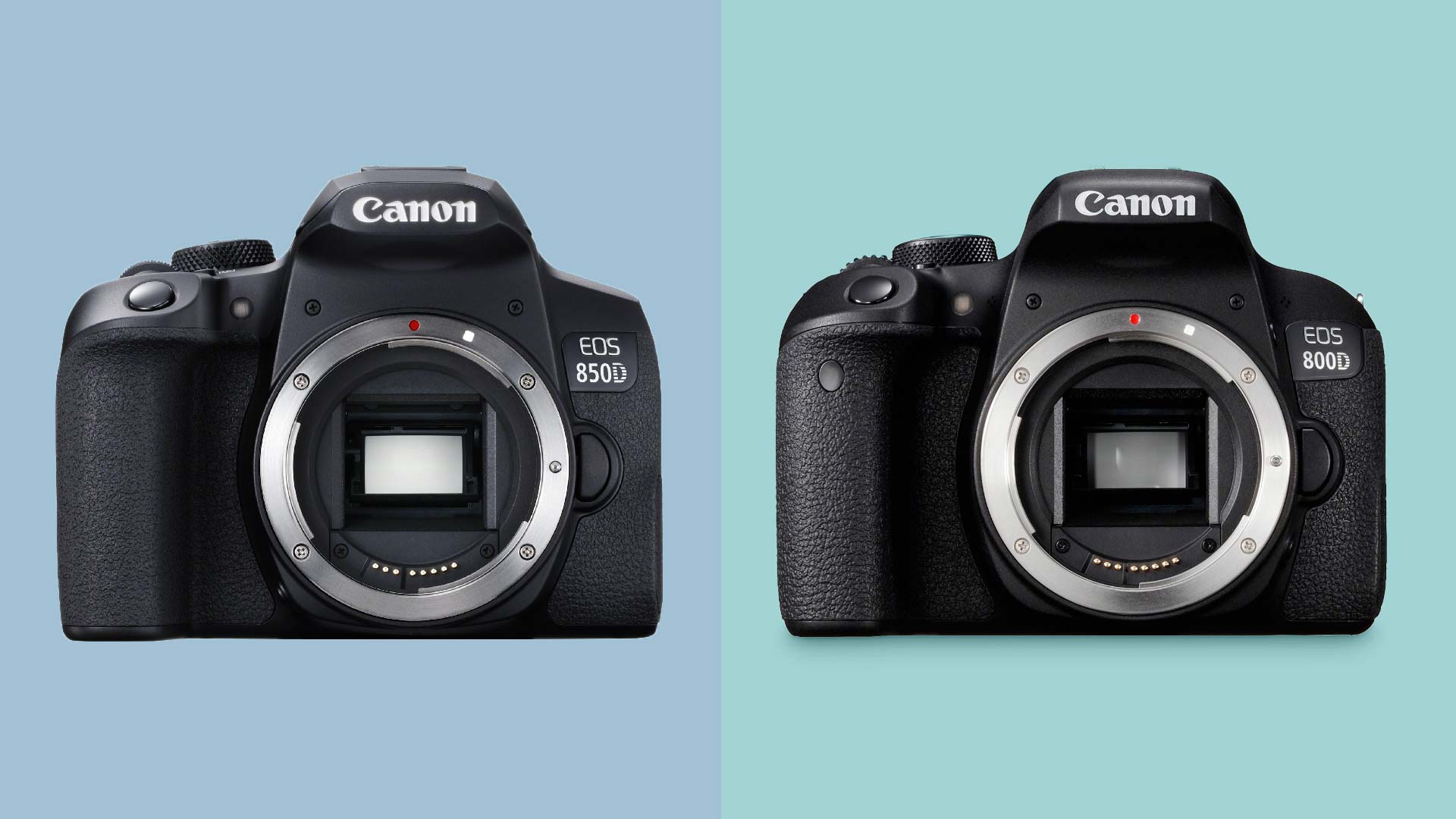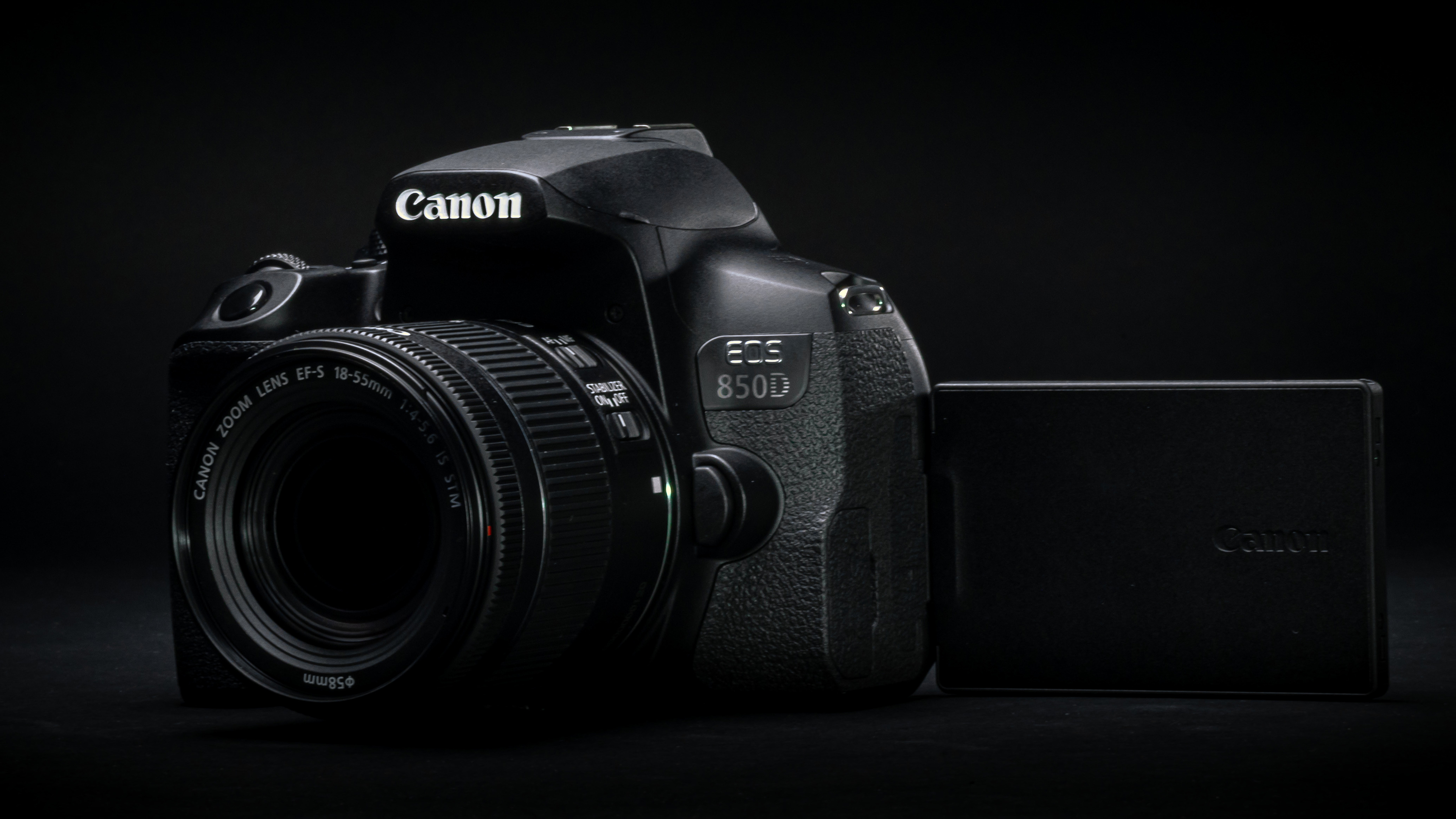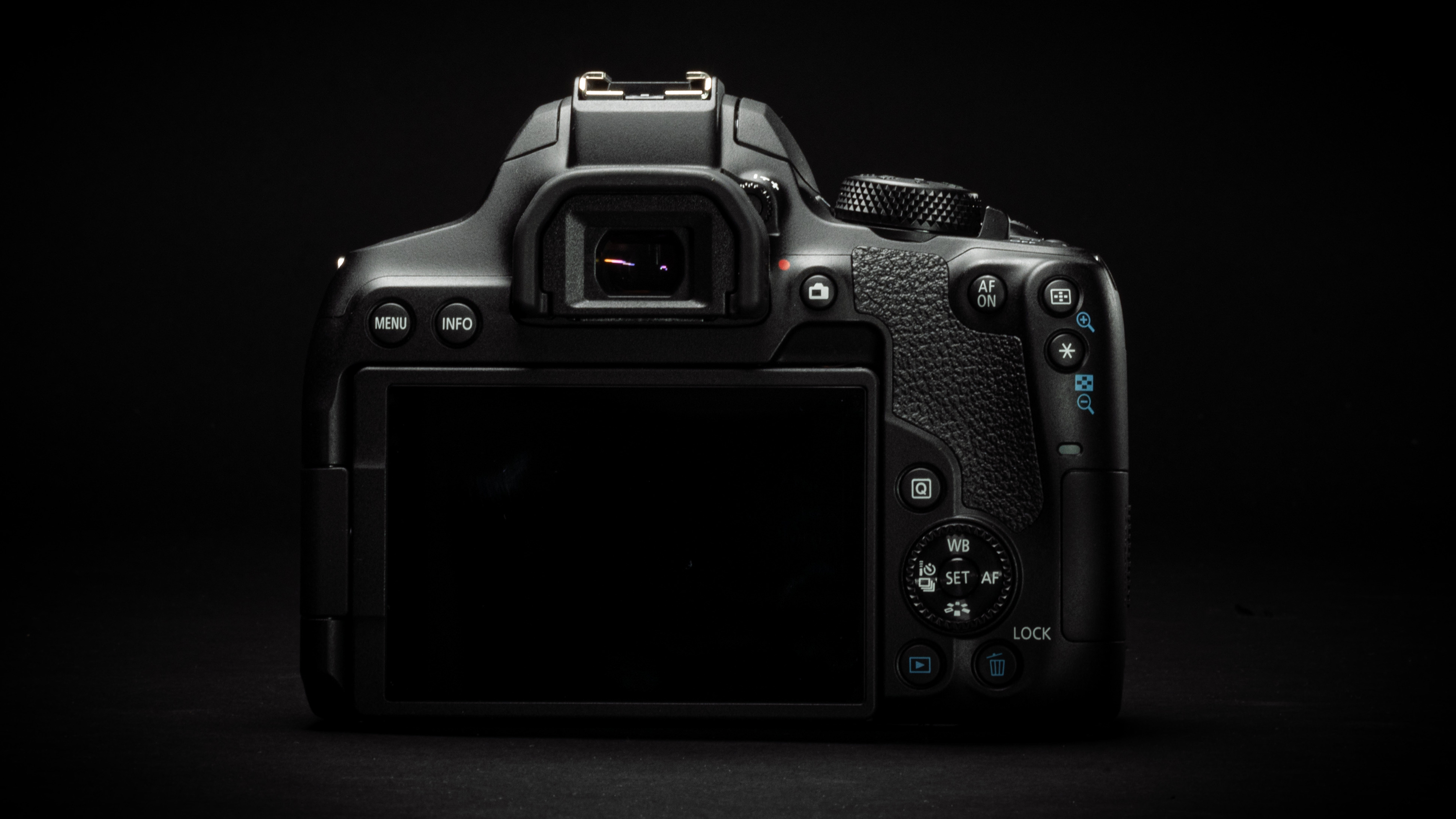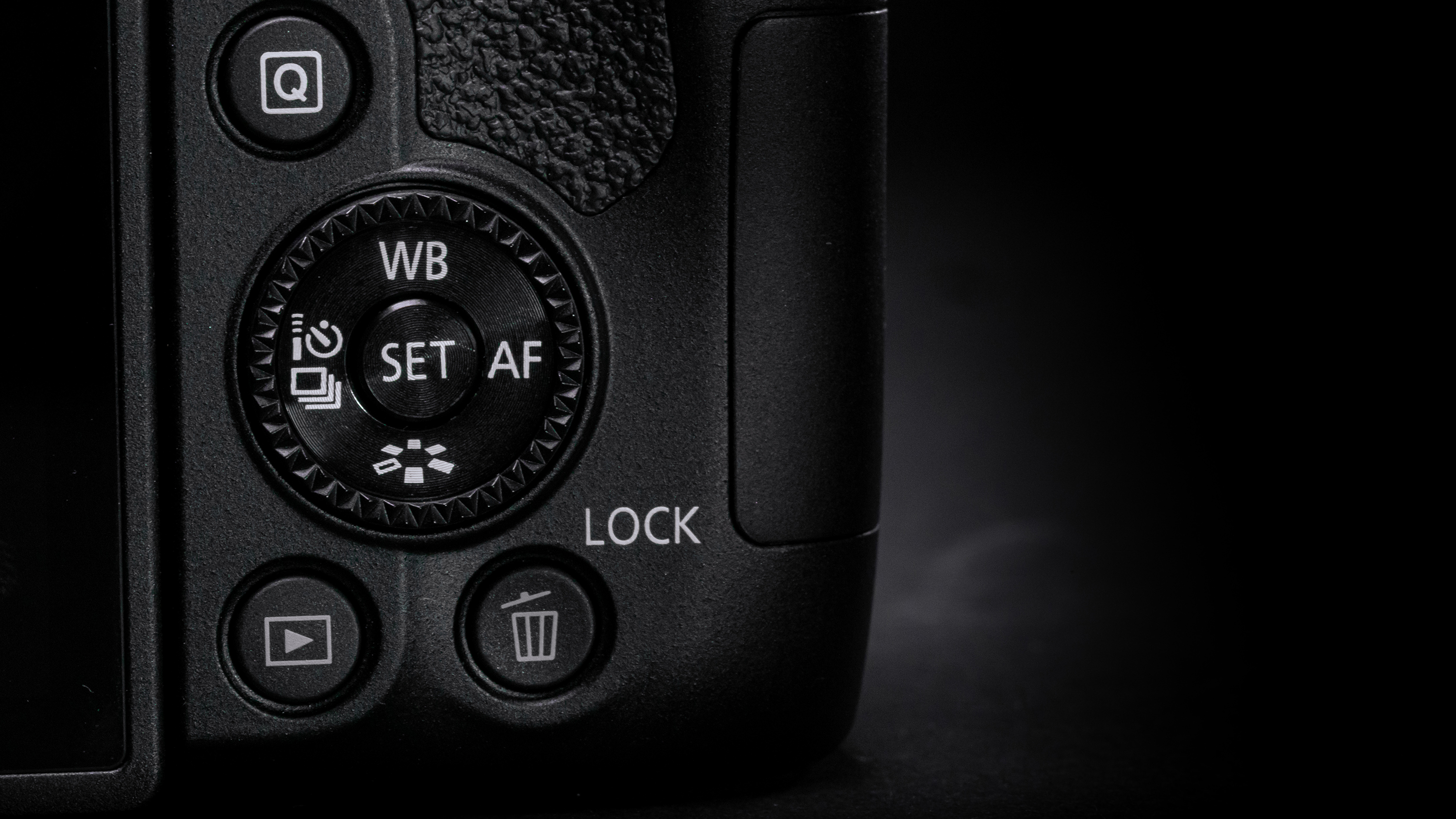Canon EOS 850D vs EOS 800D: comparing the beginner-friendly DSLRs
Which is the best entry-level DSLR for you?

The Canon EOS 850D (known in the US as the Rebel T8i) is the follow-up to the EOS 800D (the Rebel T7i), which was released back in 2017. The camera world's attention may have shifted to mirrorless, but many people still prefer DSLRs – so is the 850D a big enough upgrade to its predecessor?
The most obvious upgrade is 4K video capture. But the 850D also brings a host of smaller and more subtle upgrades, including a new processor, that should improve its shooting experience as a whole.
These two cameras look near-identical, have the same pentamirror viewfinder magnification, and familiar 3-inch vari-angle touchscreens. So what else is different and is there enough to convince you trade in your EOS 800D / Rebel T7i?

Sensor
- Canon EOS 850D / Rebel T8i: 24.1MP Dual Pixel CMOS APS-C Sensor
- Canon EOS 800D / Rebel T7i: 24.2MP Dual Pixel CMOS APS-C Sensor
Those expecting a big sensor upgrade may be disappointed by the Canon EOS 850D / Rebel T8i. It has a 24.1MP APS-C sensor, compared to the old 800D's 24.2MP chip. These are the 'effective' megapixel counts, and the sensor total for each is 25.8 megapixels.
You get the same sensor area, and the resolution difference is minimal. We expect the EOS 850D has the same chip as the Canon EOS 250D. And there’s no vast image quality gulf between the 800D and 250D.
This apparent water-treading is no bad thing. A 24MP resolution is good for an APS-C sensor, offering a fine balance of detail at low ISO and reasonably large photosites for when higher sensitivities are needed.
That the two cameras have the very same ISO range is no surprise, then. Both have a native ISO range of 100-25,600, which can be expanded to 51,200 when you need to shoot in a very dark environment and can stomach that your images simply won’t look that great.
Sign up for breaking news, reviews, opinion, top tech deals, and more.
Shutter speeds on tap are the same as well, at 1/4000 of a second up to 30 seconds, for when the light is extra-low and your tripod extra-sturdy.

Autofocus
- Canon EOS 850D / Rebel T8i: 45 cross-type points, 143 Live View points
- Canon EOS 800D / Rebel T7i: 45 cross-type points, 49 Live View points
We’re used to seeing what seem like huge improvements to AF systems in mirrorless cameras, because they are rooted to the sensor. But in the lower-cost DSLR world? Not so much.
Like its predecessor, the Canon EOS 850D / Rebel T8i has 45 cross-type focus points. This may seem like a low number if you’re more of a mirrorless camera fan, but focusing with them will be fast and accurate.
Canon does claim that the 850D is better at low-light focusing, with lock-on using the central focusing point at -4EV, compared to -3EV in the 800D.
There is a clearer difference when you switch to the Live View, using the LCD screen to compose. On both cameras this reverts from the traditional phase detect AF system to one based on the on-sensor Dual Pixel AF.
The Canon EOS 800D has a maximum of 49 on-screen focus points, with the 850D up to 143 points, depending on the shooting mode used. Of course, if you use Live View most of the time, it's probably worth looking at a mirrorless camera like the Canon EOS M6 Mark II rather than a DSLR.

Processor and performance
- Canon EOS 850D / Rebel T8i: Digic 8 processor, up to 7fps burst shooting
- Canon EOS 800D / Rebel T7i: Digic 7 processor, up to 6fps burst shooting
Shooting performance highlights one of the most obvious benefits of the Canon EOS 850D / Rebel T8i. It has a newer Digic 8 processor, capable of burst speeds of up to 7fps. Or 7.5fps using Live View.
The 800D’s Digic 7 processor shoots at up to 6fps. While this upgrade does not elevate the 850D to a new level of sports-style shooting, we’ll take any boost we can get if it means capturing that perfect frame during fast action.
This newer processor should also see some improvement to higher ISO noise handling. Judging by the Canon EOS 250D, a slight reduction in color noise is the most likely real-world result.
The metering sensor has been changed too, from one with 7,560 points in the EOS 800D to 200,000 points in the EOS 850D. This should help with autofocus performance, too.
Other core tech remains the same, with both cameras offering Wi-Fi, Bluetooth and NFC connectivity. They use the same LP-E17 battery too. But presumably thanks to improved efficiency in some of the new hardware, the EOS 850D is rated for up to 800 shots, compared to the 800D’s 600 shots (from the industry standard CIPA ratings, in viewfinder mode).

Video
- Canon EOS 850D / Rebel T8i video: 4K/25p, 1080/60p
- Canon EOS 800D / Rebel T7i video: 1080/60p
Shooting speed gave us the first major Canon EOS 850D improvement, but video offers the most important. You can shoot video at 4K resolution, whereas the 800D’s top capture mode is 1080p at 60 frames per second.
The 850D's 4K capture is at 24 or 25 frames per second, not 60, but this is just what we expect from a DSLR. And, just like last time, the video mode can use five-axis digital stabilization for smoother footage.
Some bad news: when shooting 4K video, focusing is limited to contrast-based AF. As this loses the phase detect of Canon’s Dual Pixel AF system, you will likely see some focus seeking if you re-focus.
Both cameras have a 3.5mm socket for an external mic, and a mini HDMI output.

Value
- Canon EOS 850D / Rebel T8i (body-only launch price): $749.99/£819 (around AU$1,580)
- Canon EOS 800D / Rebel T7i (body-only launch price): $750/£779.99 (around AU$1,511)
The Canon EOS 850D / Rebel T8i has a similar launch price to its predecessor. You can also buy it with a kit zoom, the EF-S 18-55mm f/4-5.6 IS STM, for $899.99/£899 (around $AU1,740).
Of course, these days the EOS 800D can be found for around $200 / £200 less than its original cost online, making it good value for money considering how close it is to its successor, at least in terms of specs.
The Nikon D5600 is the obvious alternative but, like the 800D, it’s quite old now and does not have 4K video capture.
Canon’s EOS 850D is the best buy for 4K video from a traditional DSLR manufacturer on a sensible budget right now. But there are plenty of compelling rivals if you’re willing to try out a mirrorless camera. The Sony A6100 with kit lens can be found for significantly less, and so can Canon’s own EOS M50 compact system camera.

Early verdict
The Canon EOS 850D / Rebel T8i does just enough to keep the company’s DSLR line in the present, by adding 4K video. Other improvements, like slightly better burst speed and a longer-lasting battery, according to the CIPA figures, are more like nice-to-haves.
Affordable DSLRs may have lost momentum compared to the many mirrorless alternatives, but for now this is the obvious choice if you want a DSLR with 4K video that is not prohibitively expensive, and enjoy the traditional DSLR benefits including handling and battery life.
- These are the best DSLRs you can buy right now

Andrew is a freelance journalist and has been writing and editing for some of the UK's top tech and lifestyle publications including TrustedReviews, Stuff, T3, TechRadar, Lifehacker and others.